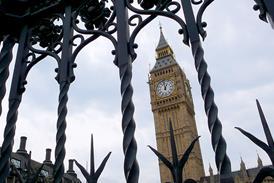Do Francis and Keogh teach us that the way we review performance risks making some problems appear smaller than they actually are, asks Tim Gilling
Sir Bruce Keogh described his review of hospitals with high mortality rates as the most transparent the NHS has ever seen − a turning point from which there is no return. He was clear that it had broken new ground.
What’s interesting, though, is that the review didn’t have its roots in self-improvement. The drive for the review did not come from inside the NHS; it was commissioned by the prime minister following the publication of the Francis report (am I alone in thinking the NHS must have already had access to the data and information that triggered the review?).
‘Data about patient experience does not always match the reality of hospital performance − most of thetrusts reviewed by Keogh were not outliers for patient experience data’
Nevertheless, it has provided a potential model for the future. With many difficult decisions about healthcare to be made over the next 2-3 years, will we see this experiment in transparency replicated by clinical commissioning groups and NHS England?
There are certainly some opportunities for them to follow Sir Bruce’s lead: for example, CCGs will be grappling with the implications of funding allocations and NHS England has kicked off its “time to talk”. People will be hoping that the talking also involves some listening.
Drawing conclusions
I’ve drawn three general conclusions from Sir Bruce’s review. First, it is difficult for anyone on the outside to know what happens inside hospitals − the risks and success factors associated with going into hospital are just not clear enough to patients and the public. This may cause people to regard their local hospital as a “sacred cow”, when in reality it might be failing patients. On the other hand, it could be achieving remarkable results in the context of the challenges it faces.
‘Do Francis and Keogh teach us that the way we review performance risks making some problems appear smaller than they actually are?’
Second, data about patient experiences does not always match the reality of hospital performance − most of the 14 trusts reviewed by the Keogh team were not outliers for patient experience data. This may indicate that patients have low expectations of hospitals. On the other hand, patients might be getting great care even if treatment isn’t ultimately successful.
Third, data about experience and performance is only a starting point to asking questions − Sir Bruce cautioned against drawing rigid conclusions based on mortality data. Relying only on the results of national surveys about primary and secondary care, or indeed, the results of friends and family test, might not be the best way to judge whether hospitals or general practices are good or bad.
Having said all that, the Centre for Public Scrutiny endorses Sir Bruce’s eight ambitions and we will look to support local scrutiny of the improvement plans already developed for the 14 trusts, as well as helping others scrutinise what happens in their own local hospital. We note that council health scrutiny was not mentioned by the review as a way to support improvement.
‘To find solutions to common challenges we face in healthcare, it’s vital we have as clear a picture as possible about risk, success and reality’
Recently, as part of a consultancy project, I referred to our publication Mirror, Mirror: Reflecting Improvement through Review and Challenge about the importance of review and challenge to improvement. It was written for councils but has substantial echoes for other public bodies.
It was published in February 2012, a year before the Francis report. So in thinking about Francis and Keogh, I’ve been struck again by the importance of our principles of transparency, involvement and accountability to good governance and review and challenge − in the NHS and elsewhere.
Reflecting on warnings
“Objects in the mirror are closer than they appear” − this is a safety warning that appears on the side mirrors of motor vehicles in the US and Canada. While the mirrors give a useful field of view, they make objects appear smaller and therefore further away than they actually are; drivers might make manoeuvres assuming other vehicles are a safe distance behind, when in fact they are much closer.
Should we apply a similar warning to the way the NHS is reviewed and challenged? Do Francis and Keogh teach us that the way we review performance risks making some problems appear smaller than they actually are?
Sir Bruce pointed out the huge value of insight from listening to staff and patients − he called it “probably the single most powerful aspect of the review process”. Through this approach, the review teams were able to make “a cultural assessment, not just a technical assessment”, which brought issues at the trusts into sharper focus. In other words, they didn’t appear smaller anymore.
We will be developing resources to support local understanding and scrutiny of hospital performance. To find solutions to common challenges we face in healthcare, it’s vital we have as clear a picture as possible about risk, success and reality.
Tim Gilling is deputy executive director of the Centre for Public Scrutiny. For more thoughts from the centre on the Keogh review see its recent blog.



























3 Readers' comments